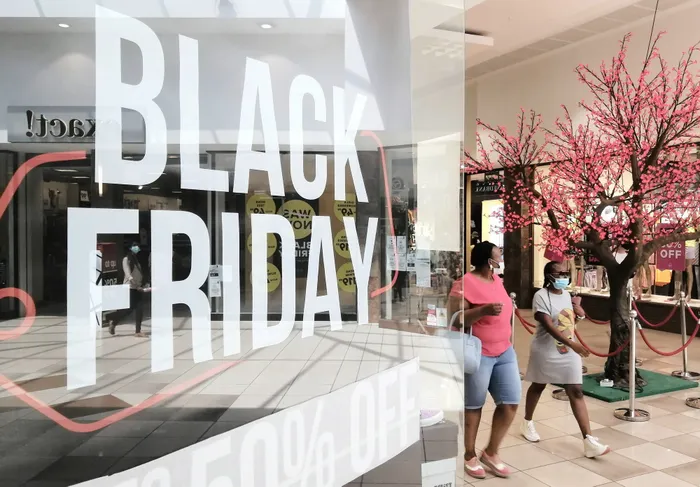Retail sales expected to remain depressed despite upswing in November

FNB senior economist Siphamandla Mkhwanazi said the Black Friday boost appears relatively muted in 2022 compared to November 2018 and November 2019, when growth averaged 2.9%, respectively. Picture: Jacques Naude African News Agency (ANA)
Retail activity in South Africa is expected to remain depressed by tough economic conditions in spite of consumers tentatively returning to the shops in November to take advantage of Black Friday discounts.
According to Statistics South Africa (Stats SA), shopping activity unexpectedly rebounded in November mainly driven by retailers in textiles, clothing, footwear and leather goods.
Data from Stats SA showed that retail trade sales rose by 0.4% year-on-year in November, following an upwardly revised 0.7% decline in September.
This retail sales print followed two consecutive months of declines of 0.7% in September and 0.4% in August, and was stronger than market forecasts of a 0.6% contraction.
Clothing and footwear volumes jumped by 5.9% year-on-year in November, from 2.9% in October, while household furniture sales increased by 6.0% from 1.7% in October.
Conversely, food and beverages as well as paint, glass, and hardware material retailers, and pharmaceuticals and medical goods, cosmetics and toiletries were a drag on November volume sales.
Food and beverages volumes fell by a deeper 5.1% in November from a 2.4% contraction in October, while hardware material volumes declined by 6.5% in November after falling by 5.6% in October.
A notable decline of 4.1% in volume sales was also recorded by pharmaceuticals following well contained Covid-19 infections relative to the previous year.
FNB senior economist Siphamandla Mkhwanazi said the Black Friday boost appears relatively muted in 2022 compared to November 2018 and November 2019, when growth averaged 2.9%, respectively.
On a monthly basis, retail trade increased by 1.1% in November, the most in 10 months, after a downwardly revised gain in October.
But the total volumes in the three months to November were still lower by 0.1% compared to the preceding three months.
Mkhwanazi said this reflected the waning resilience by households against a slew of consumer headwinds including rising interest rates, a higher cost of living, as well as more intense bouts of load shedding.
“In line with our expectations, resilience in consumer spending is waning. We note that households have been accumulating unsecured credit more rapidly in the past few months, following a pandemic-related deleveraging trend,” Mkhwanazi said.
“This correlates with depleting household savings, subdued real income growth and generally higher costs of living, and may be indicative of squeezed household budgets.
“Apart from the fleeting festive season and back-to-school related spending in the short-term, we expect household consumption expenditure to slow into the new year as consumer headwinds persist.”
The economic headwinds characterised by crippling power cuts are not expected to affect only consumers, but retailers will also feel the impact of the slowdown as trading hours diminish.
According to the Bureau for Economic Research, the confidence of retailers fell notably in the fourth quarter of 2022, from 51% to 42%, only slightly above the long-term average of 40%.
Investec economist Lara Hodes said the retail sector remained subdued despite the strong month-on-month lift in November which saw consumers taking advantage of discounted goods and service offering.
“Heightened load shedding continues to impede retailers’ ability to operate optimally, with maintenance commitments, vandalism and plant breakdowns affecting generation capacity,” Hodes said.
“Indeed, the electricity supply crisis is having a detrimental effect on especially smaller players. Moreover, consumers remain highly constrained and continue to grapple with heightened living costs.”
BUSINESS REPORT